Lightbits Labs LightOS 2.0 Enabling Cloud-Native Persistent Storage Integration for Kubernetes
Enables independent scaling of compute and storage, availability via clustering, provides virtual NVMe volumes, delivering low latency and high performance, and providing HA via target-side storage server failover.
This is a Press Release edited by StorageNewsletter.com on July 1, 2020 at 2:58 pmLightbits Labs Ltd. launched LightOS 2.0, enabling full cloud-native persistent storage integration for Kubernetes with scaling and availability via clustering.
With the efficiency and convenience of AFAs and the high performance of direct-attached flash storage, LightOS 2.0 enables independent scaling of compute and storage. This solution maximizes Kubernetes functionality, provides ease of migration and delivers fast recovery times following server failure. It provides virtual NVMe volumes, delivering low latency and performance, while at the same time providing HA via target-side storage server failover. The result is no interruption in service or forced migration due to a drive or storage node failure.
“Lightbits Labs is the only storage solution in production in the market today that allows data centers to take full advantage of NVMe/TCP,” said Lip-Bu Tan, Lightbits board member, and founding managing partner, WRVI Capital. “The advancements in LightOS 2.0 will ensure that customers can easily scale their infrastructure, and in-turn their business, without compromising performance, efficiency, or cost.“
LightOS 2.0 leverages a Container Storage Interface (CSI) plug-in for Kubernetes to address the need for third-party storage support for stateful container storage needs. This has become more important as Kubernetes microservices move from stateless to stateful applications. LightOS 2.0 is for containerized environments like Kubernetes that require large-scale clusters with persistent and durable storage for rapid node migration, workload rebalancing, or recovery from failure without copying data over the network. If any computer node in the network fails, data is moved virtually by pointing it to another container. Taken together,it allows for lower TCO via higher capacity utilization as well as increased operational efficiency via decreased downtime and infrastructure flexibility.
“At cloud scale, everything fails. LightOS 2.0 is the industry’s first NVMe/TCP scale-out clustered storage solution – protecting vs. data loss and avoiding service interruptions at scale in the presence of SSD, server, storage, or network failures,” said Kam Eshghi, chief strategy officer. “Now containerized applications can enjoy all of the benefits of disaggregated storage using LightOS CSI plug-in for Kubernetes, spinning up persistent storage volumes for containerized workloads just as easily as spinning up another container.“
When installed on commodity servers in large-scale data centers, LightOS 2.0 is automatically optimized for I/O intensive compute clusters, such as Kafka, Cassandra, MySQL, MongoDB, and time series databases. Each storage server in the cluster can support up to 64K namespaces and 16K connections. With LightOS 2.0 providing a highly available and durable storage layer, application teams can focus their efforts on developing new services while LightOS 2.0 takes care of the underlying whole storage platform, guaranteeing the availability of and high-performance access to the data.
“It’s clear that customers want on-demand, high performance, always-available storage no matter where their workloads run. As applications move to the edge, we’re excited about the potential of Lightbits LightOS 2.0 to leverage our rich, interconnected datacenter fabrics, providing local flash-style performance without the operational and reliability issues of server installed drives.” said Zachary Smith, MD, bare metal, Equinix, Inc.
Click to enlarge
LightOS 2.0 provides following benefits:
-
Software-defined disaggregated storage for cloud data centers delivering direct-attached NVMe SSD performance and up to a 50% reduction in tail latency
-
Optimized for low-cost QLC flash: Extends write endurance of drives and improves write performance without the need to modify applications
-
Fast container migration via CSI persistent and durable storage
-
Standard-based NVMe/TCP block storage access protocol for application-server-to-storage-server communication
-
LightOS clusters leverage standard NVMe-oF 1.1 multipathing with data protection on the storage target side, providing transparency to the client with fast failover
-
Distributed and durable cluster management with fast failover handling
-
No single point of failure in data and control paths
-
Multiple LightOS clusters can exist in the same cloud data center and clients can use multiple clusters simultaneously
-
Support for Kubernetes v1.13 and v1.15 – v1.18 and later for any volume size, number of volumes or Kubernetes size cluster
-
Rolling upgrades allow for LightOS updates without disruption to storage clients
-
Target-side solution that is easy to deploy at scale, without having to touch the network infrastructure or the clients
-
In cases where Kubernetes is integrated with the OpenStack platform, LightOS 2.0 allows for stateful containers through Kubernetes via CSI, or via a Cinder plug-in
“LightOS 2.0 is game changing for the data center. It transforms a rack of x86 servers with NVMe drives into a large high-performance highly redundant storage pool connected to applications servers via NVMe/TCP with Kubernetes integration and HA. Everything is standard in the solution – TCP protocol on Ethernet, network switches, NICs and drivers – without the need to consider specialized and costly new network infrastructure. Thus LightOS protects current investments and boosts deployments at no risk to deliver new SLA levels for modern application workloads. This is the perfect illustration of the SDS philosophy,” says Philippe Nicolas, analyst, Coldago Research.
Click to enlarge
Resources:
Blog: What’s New In LightOS 2.0?
LightOS 2.0 Product Overview: Software-Defined Composable Storage
Kubernetes and LightOS: Performance, Persistence, Simplicity
Apache Kafka and LightOS
Read also:
Exclusive Interview With Lightbits Labs CEO Eran Kirzner
Accelerating storage with disaggregated architecture thanks to NVMe/TCP
by Philippe Nicolas | May 7, 2020 | News
Lightbits LightOS Delivers NVMe/TCP Clustered Storage Solution
Protects vs. data loss and avoids service interruptions at scale, and maximizes operational efficiency, ensuring applications continue working in presence of failures, and failover is handled automatically, keeping data consistent and available.
December 20, 2019 | Press Release








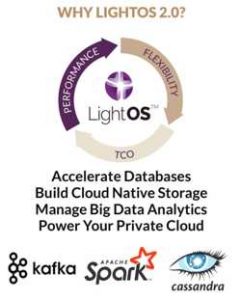
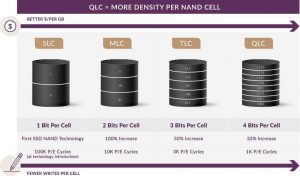
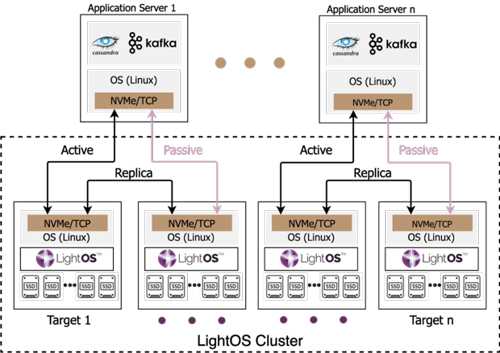
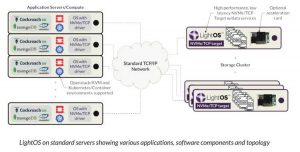
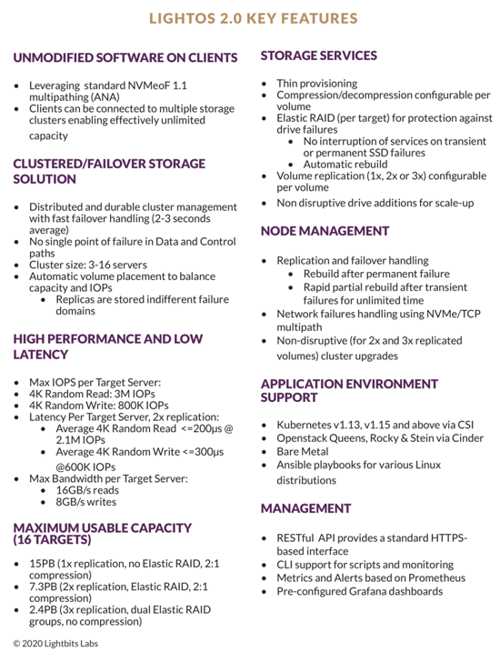






 Subscribe to our free daily newsletter
Subscribe to our free daily newsletter

